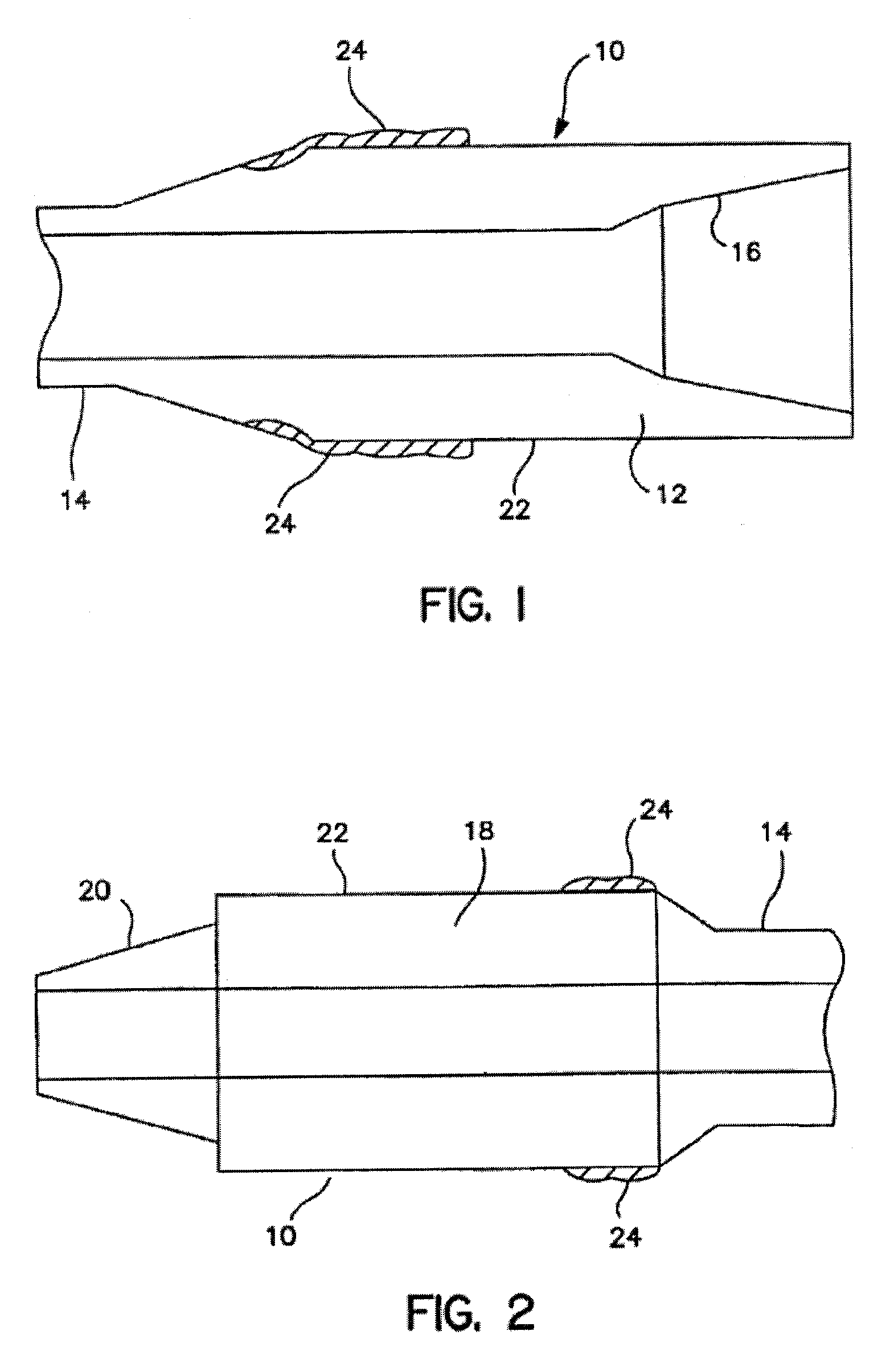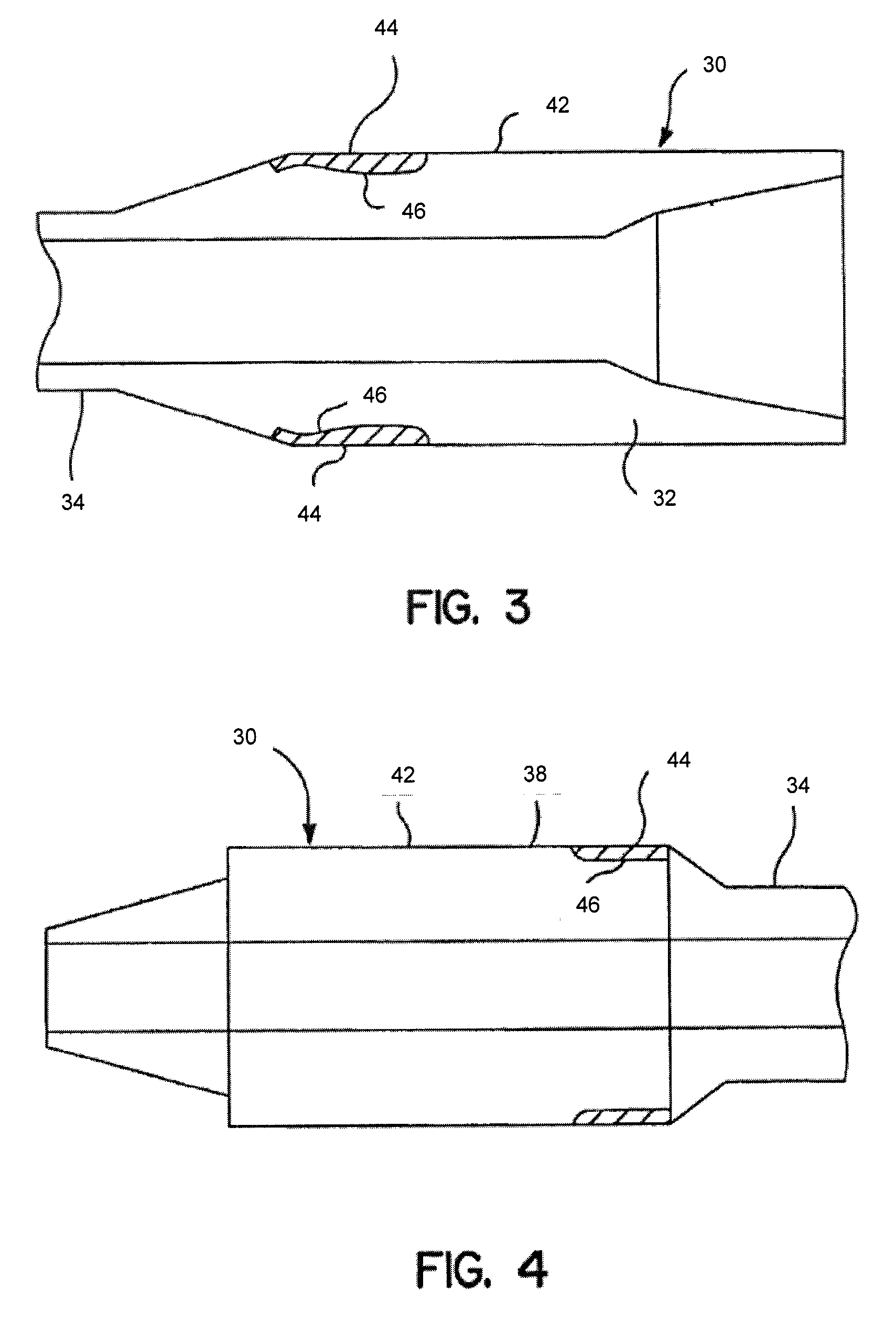Methods of treating hardbanded joints of pipe using friction stir processing
a technology of friction stir and hardbanded joints, which is applied in the direction of manufacturing tools, other domestic objects, non-electric welding apparatus, etc., can solve the problems of brittle primary carbide, high hardness of primary carbide, and high cost of tungsten carbid
- Summary
- Abstract
- Description
- Claims
- Application Information
AI Technical Summary
Benefits of technology
Problems solved by technology
Method used
Image
Examples
Embodiment Construction
[0026]In one aspect, embodiments disclosed herein relate to treatment of hardbands on the surface a tool used in a wellbore operation. In particular, embodiments disclosed herein relate to treatment of a hardband weld using friction stir processing.
[0027]The methods of the present disclosure may be used to treat a hardband or layer of wear reducing material on any type of tool used in a wellbore operations. However, particular embodiments may relate to use of friction stir processing to treat hardbanding previously applied using other welding techniques on a region of a downhole tool or component having a greater OD than other adjacent components, thus necessitating wear protection for the component. For example, components having a greater OD than other adjacent downhole components may include drill pipe joints, drill collars, stabilizers, etc. However, one skilled in the art would appreciate that the methods of the present disclosure are not so limited, and friction stir processin...
PUM
| Property | Measurement | Unit |
|---|---|---|
| length | aaaaa | aaaaa |
| Brinell hardness number | aaaaa | aaaaa |
| frictional heat | aaaaa | aaaaa |
Abstract
Description
Claims
Application Information
 Login to View More
Login to View More - R&D
- Intellectual Property
- Life Sciences
- Materials
- Tech Scout
- Unparalleled Data Quality
- Higher Quality Content
- 60% Fewer Hallucinations
Browse by: Latest US Patents, China's latest patents, Technical Efficacy Thesaurus, Application Domain, Technology Topic, Popular Technical Reports.
© 2025 PatSnap. All rights reserved.Legal|Privacy policy|Modern Slavery Act Transparency Statement|Sitemap|About US| Contact US: help@patsnap.com



